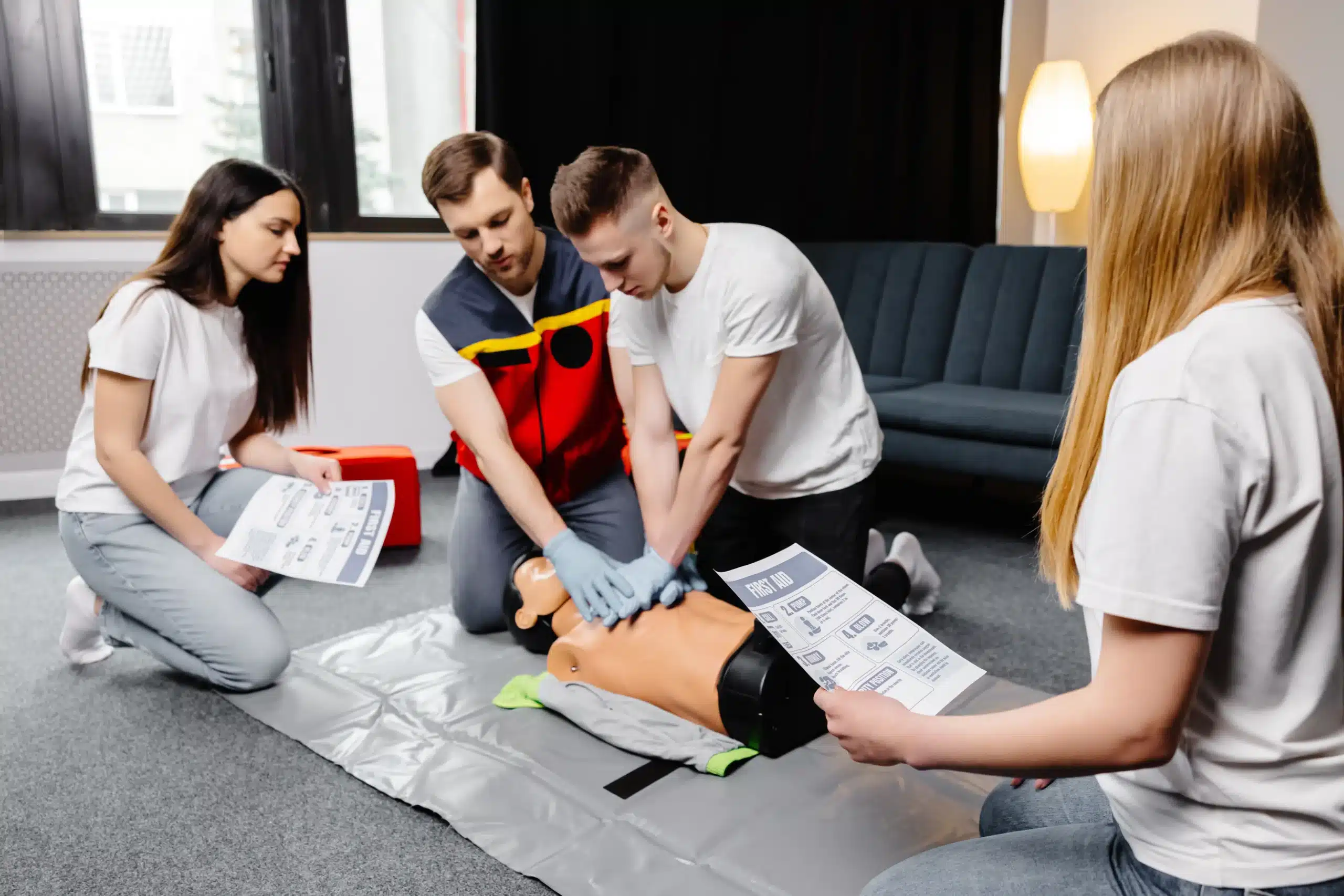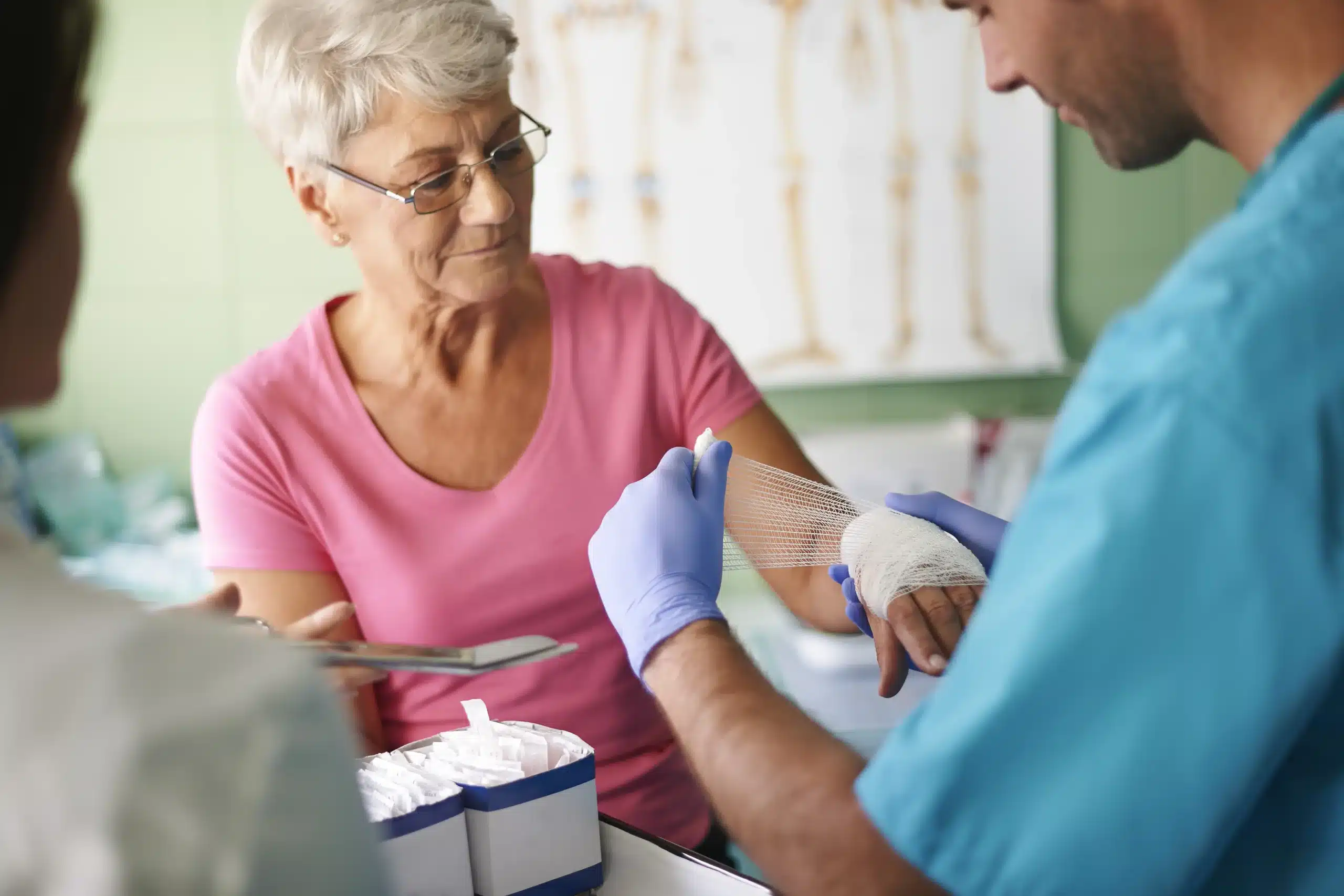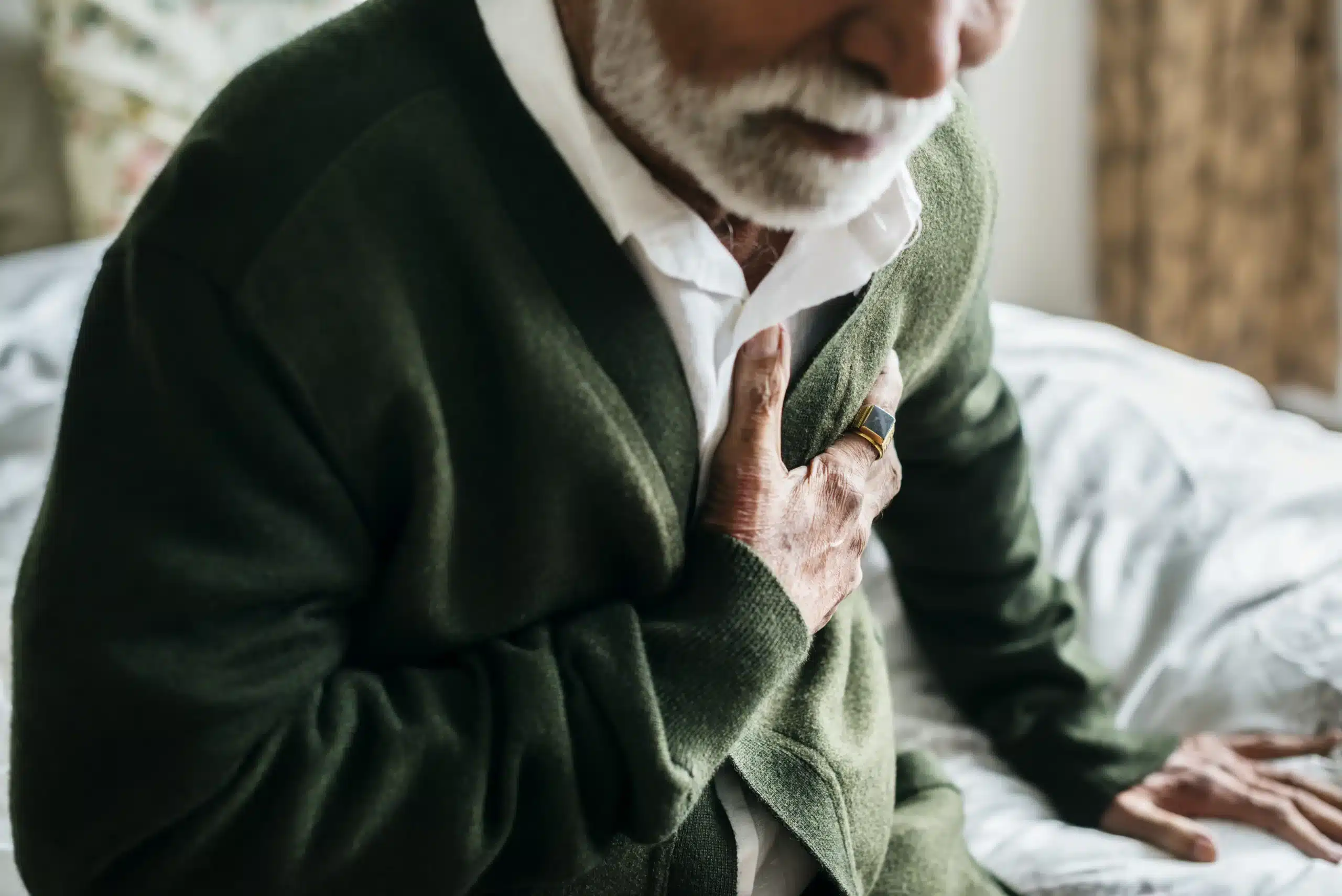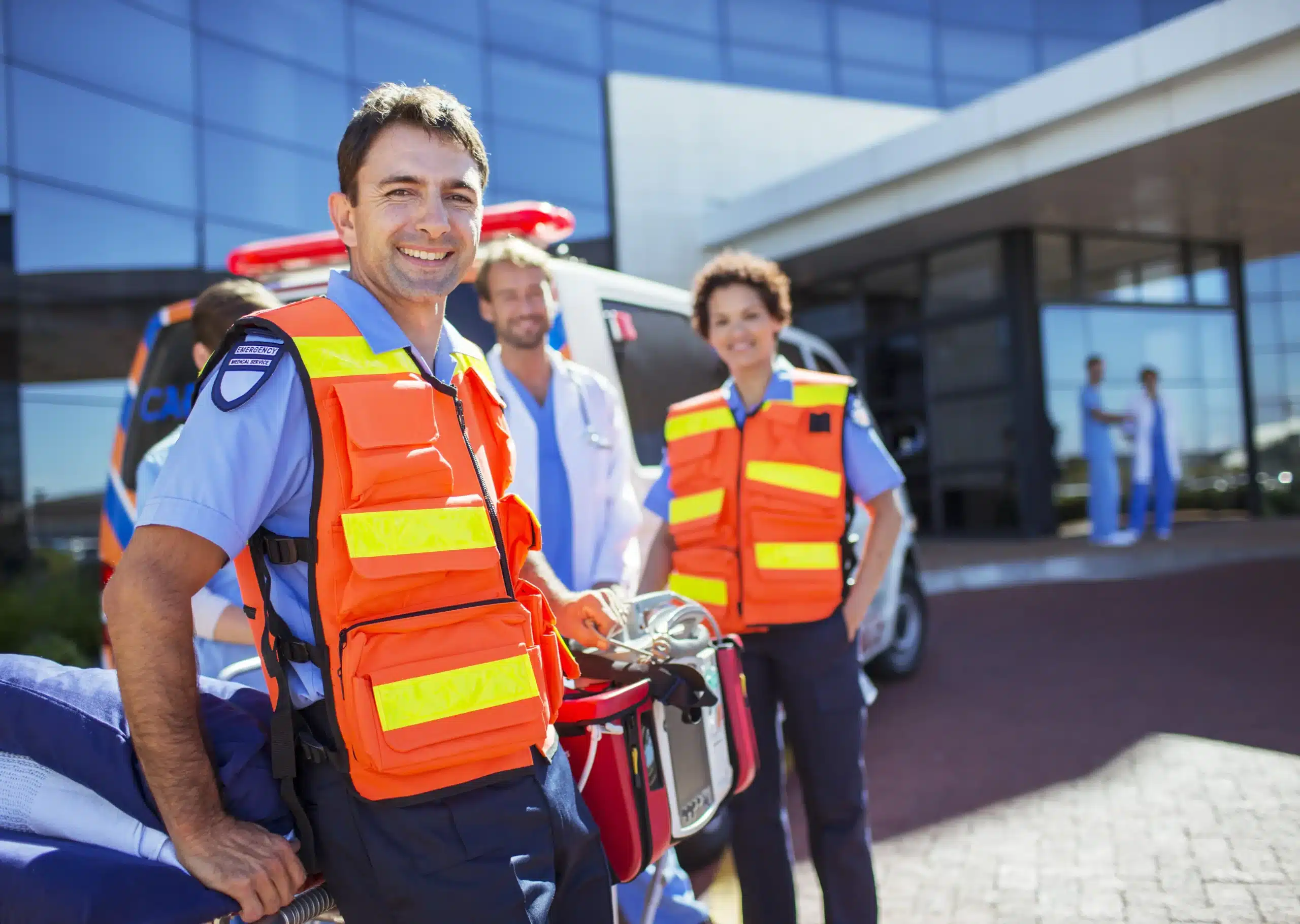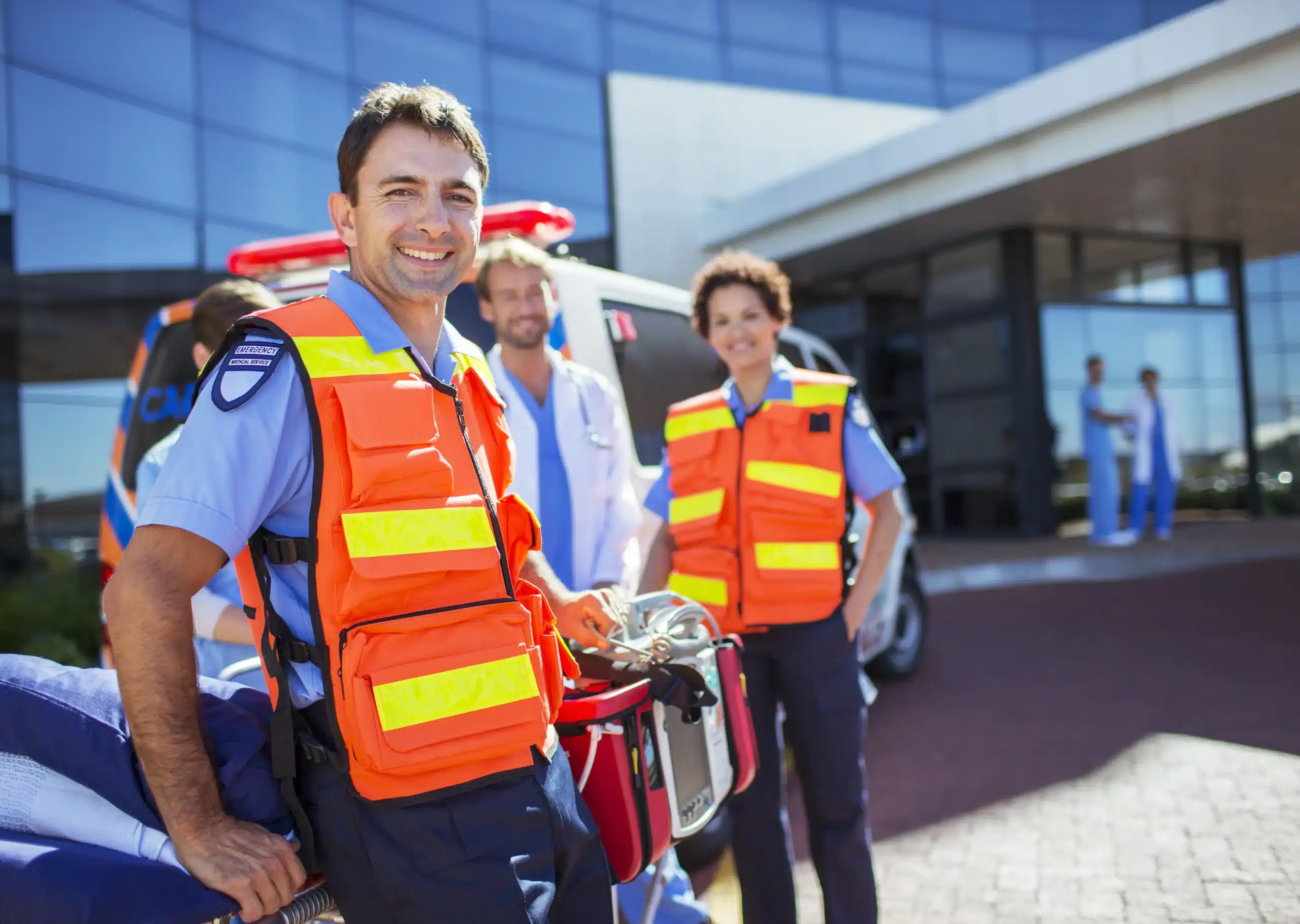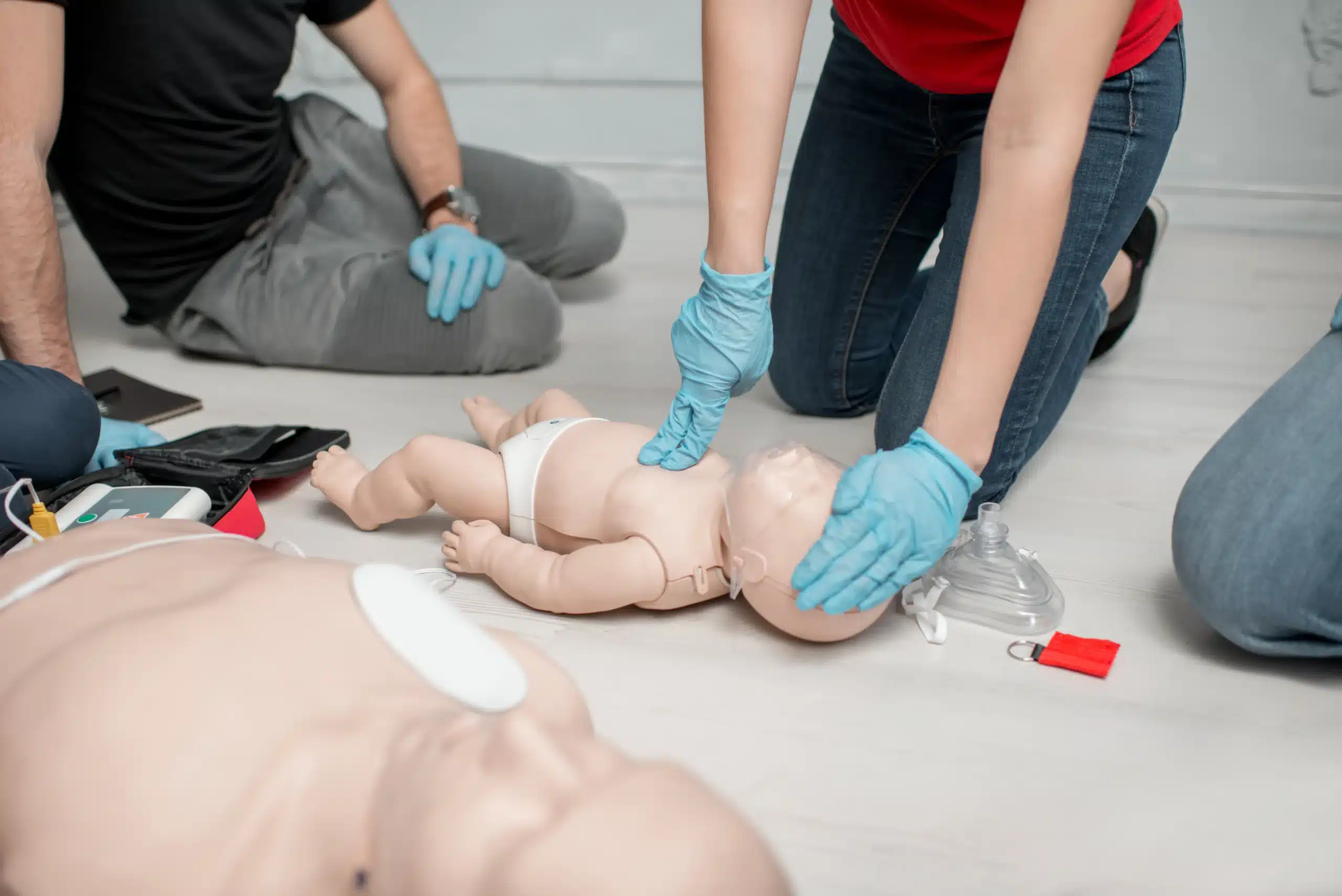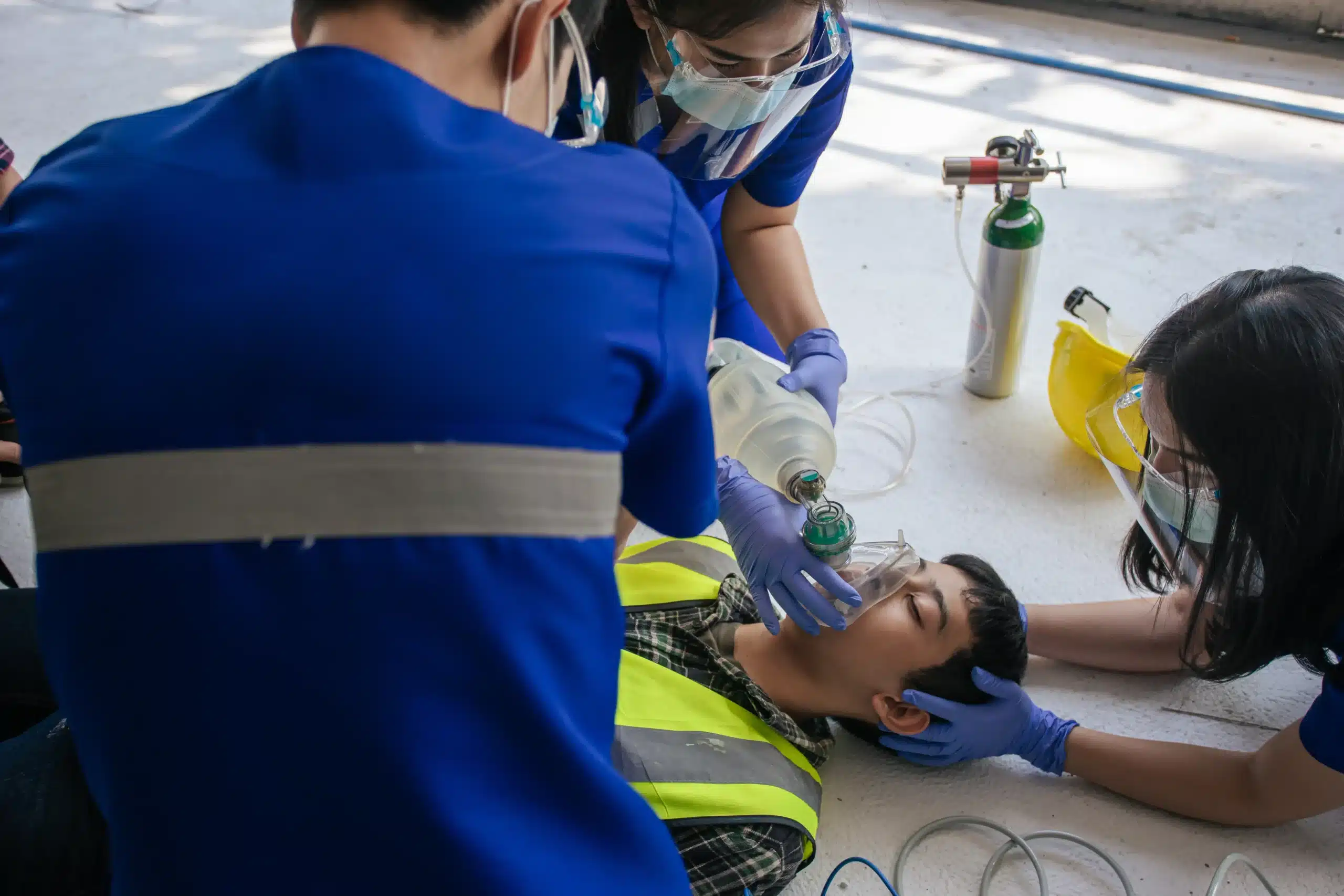Accidents happen. Emergencies arise. Being equipped to handle these situations is a powerful skill. First aid training provides the tools and knowledge to respond confidently and potentially save lives. This guide explores the various aspects of first aid, from basic wound care to life-saving techniques like CPR. We’ll also delve into finding “first-aid classes near me,” comparing different training providers, and understanding certification requirements. Let’s empower you to become a confident first responder in your community.
Key Takeaways
- First aid skills are essential for everyone: Learning basic first aid empowers you to confidently handle medical emergencies, big or small, until professional help arrives. Seek out training that combines CPR/AED instruction with basic life-saving techniques.
- Finding the right course is key: Prioritize certified instructors, hands-on practice, and reputable certifications (like those from the AHA). Research reviews and compare costs to find a program that aligns with your needs and budget. Consider providers like Safety Training Seminars for affordable, quality training.
- Maintain your skills: Keep your certification up-to-date with refresher courses and regular practice. First aid guidelines can change, so staying current ensures you’re always prepared to provide effective care in any situation.
What is First Aid Training?
First aid training gives you the skills to handle medical emergencies until professional help arrives. It covers a range of situations, from minor cuts and burns to more serious incidents like choking or a heart attack. Learning these skills can make a real difference. This section breaks down the key components of first aid training.
CPR and AED Training
CPR, or Cardiopulmonary Resuscitation, is a life-saving technique used when someone’s heart stops beating. It involves chest compressions and rescue breaths to keep blood and oxygen flowing to the brain and other vital organs. Many CPR classes combine CPR and AED training with basic life-saving and first-aid training. An AED, or Automated External Defibrillator, is a portable device that can shock the heart back into a normal rhythm. Learning how to use an AED is a crucial part of CPR training. You can find CPR and AED training through various organizations, including the American Heart Association.
Basic Life Support (BLS)
Basic Life Support (BLS) is a higher level of CPR training typically required for healthcare providers and other medical professionals. BLS certification covers more advanced techniques, including two-person CPR, bag-mask ventilation, and the use of advanced airways. It also emphasizes teamwork and communication in medical emergencies. BLS certification meets the CPR requirements for healthcare professionals and medical students. Safety Training Seminars offers BLS Certification courses.
First Aid Fundamentals
First aid fundamentals cover the essential skills needed to manage common injuries and illnesses. This includes treating wounds, burns, sprains, fractures, and allergic reactions. You’ll also learn how to recognize and respond to medical emergencies like heart attacks, strokes, and seizures. First aid training is a valuable experience, equipping you with the knowledge and skills to respond effectively in emergencies. It’s a smart move for anyone, not just medical professionals.
Pediatric First Aid
Pediatric first aid focuses on the specific needs of infants and children. It covers topics like CPR for infants and children, choking relief, and managing common childhood illnesses and injuries. Pediatric first aid training is essential for parents, caregivers, teachers, and anyone who works with children. Safety First Seminars offers a Pediatric First Aid training program covering the unique needs of infants and children.
Find First Aid Classes Near You
Finding the right first aid class is easier than you think. Whether you’re a healthcare professional needing CPR certification or a parent wanting to be prepared for emergencies, several options are available.
Search Online
Start with a simple online search. Type “first aid classes near me” or “CPR training [your city]” into your favorite search engine. This will point you to local training centers, community organizations, and other providers offering courses in your area. The Red Cross, for example, has a website with a searchable database of first aid training classes and emphasizes the importance of being prepared for emergencies.
Check Local Community Resources
Your local fire department, community centers, or hospitals often host first aid and CPR training sessions. Check their websites or give them a call to find upcoming class schedules. For example, the Apopka Fire Department offers various CPR and First Aid classes taught by American Heart Association-certified instructors. This is a great way to connect with resources right in your community.
American Heart Association (AHA) Courses
The American Heart Association offers various courses, including Basic Life Support (BLS certification), which meets the CPR requirements for healthcare providers and medical students. You can find AHA-certified training centers through their website.
Safety Training Seminars
Safety Training Seminars offers high-quality, affordable first aid and CPR classes in Antioch, Brentwood, and Pittsburg. They focus on creating a low-stress learning environment and provide American Heart Association courses such as BLS, ACLS, and PALS. Check their website for a low price guarantee and group discounts.
Red Cross Training Programs
The American Red Cross also provides comprehensive first aid training programs designed to equip you with the skills to handle various emergency situations involving both adults and children. Their website offers resources and information on finding a class near you.
Understand First Aid Training Costs
Knowing the price range for first aid training helps you budget and find the best value. Several factors influence the final cost, so understanding these will help you make informed decisions.
Typical Prices
First aid course costs vary depending on several factors. The level of certification you pursue plays a significant role. Basic first aid and CPR classes typically have lower price points than advanced certifications like ACLS or PALS. Course duration also matters—longer courses with more in-depth training usually cost more. Location can also influence pricing, as courses in metropolitan areas might be pricier than those in smaller towns. Finally, the training provider’s reputation can affect cost. Established providers with a strong track record sometimes charge a bit more for their expertise.
Extra Fees
Beyond the course fee, be aware of potential extra costs. Some courses require purchasing training materials like manuals or bandages. While some providers include these in the initial cost, others may charge separately. These extra fees can range from a few dollars for basic supplies to a more significant amount for specialized equipment. Always ask about any additional costs upfront to avoid surprises.
Group Discounts and Promotions
If you’re training with a group, explore potential discounts. Many providers offer reduced rates for group bookings, making it a cost-effective option for workplaces, community organizations, or families. Keep an eye out for promotions, too. Some providers offer seasonal discounts or early bird pricing, so checking their websites or social media for deals is always a good idea. Safety Training Seminars offers group discounts, making training for teams or organizations easier and more affordable.
Free and Low-Cost Training
While most comprehensive first aid courses come with a fee, some free and low-cost options exist. Organizations like the American Red Cross sometimes offer free or reduced-cost courses for specific demographics or during community events. Volunteering with organizations that provide first aid training can also be a way to receive free training in exchange for your service.
Safety Training Seminars’ Low Price Guarantee
Safety Training Seminars is committed to providing affordable, high-quality training. They offer a low price guarantee for their courses in Contra Costa County, ensuring you receive excellent training without breaking the bank. This commitment to affordability makes them a great option for anyone seeking cost-effective first aid and CPR certification.
Choose the Right First Aid Training
Finding the right first aid training program is crucial for gaining the confidence and skills to handle emergencies effectively. Here’s what to consider when making your decision:
Check Instructor Qualifications
Experienced instructors make all the difference. Look for trainers with backgrounds in healthcare or emergency services. Their real-world experience adds a layer of practical knowledge you won’t find in a textbook. This ensures you’re learning from professionals who can provide accurate and up-to-date information, answer your questions thoroughly, and offer valuable insights. Safety Training Seminars prioritizes experienced instructors for all its courses, including BLS, ACLS, and PALS certification. We understand the importance of learning from seasoned professionals.
Certification Validity and Recognition
Not all certifications are created equal. A recognized certification, like those offered by the American Heart Association, can be essential for certain jobs or volunteer opportunities. Before signing up for a course, confirm that it provides a valid and widely accepted certification. This will ensure your training meets industry standards and holds value in your field. Check with your employer or professional organization to understand their specific requirements. For those seeking affordable options, check out our group discounts.
Hands-On Practice
First aid is a hands-on skill. While the knowledge is important, being able to apply it in a real-life situation requires practice. Choose a course that emphasizes hands-on training, including scenarios and simulations. This practical experience will build your confidence and prepare you to respond effectively under pressure. Ask about the hands-on component when researching different programs.
Read Reviews and Testimonials
Before committing to a course, take a moment to see what others are saying. Reviews and testimonials from past participants can offer valuable insights into the quality of instruction, the course content, and the overall learning experience. They can also give you a sense of whether the course is a good fit for your learning style and needs. Our commitment to low prices in Contra Costa County makes quality training accessible to everyone. We believe everyone should have access to high-quality first aid training.
Prepare for Your First Aid Training
Getting ready for your first aid training is simple. Knowing what to expect and how to prepare can make your learning experience even better. Here’s what you should know:
What to Expect
First aid training is a hands-on learning experience. You’ll learn essential skills to handle medical emergencies, from treating minor cuts and burns to administering CPR. Expect a combination of interactive discussions, demonstrations, and practice sessions. Your instructor will guide you through various scenarios so you can build confidence in your abilities. MyCPR Now offers more insights into what to expect during first aid training.
What to Bring
Comfort is key! Wear clothing that allows you to move freely and participate in practical exercises. Bring a notebook and pen to jot down important information and any questions you may have. Some courses may require specific materials, so check with your chosen provider or training center beforehand. Learn more about preparing for your first aid certification.
Get Certified After Training
Upon successful completion of your first aid training, you’ll receive a certification card, typically valid for two years. This card demonstrates your competence in providing first aid and is often required for certain jobs or volunteer opportunities. Remember to keep your certification current by taking refresher courses before it expires. Safety Training Seminars offers certification cards valid for two years upon completion of their courses, including BLS, ACLS, and PALS certifications. For more information on certification, check out the City of Apopka’s resources.
Update Your Skills
First aid and CPR guidelines can change, so it’s essential to stay up-to-date. Regularly updating your skills ensures you’re always prepared to provide the most effective care. Many training providers offer refresher courses or combined CPR and first aid training to help you maintain your skills. Consider combining your CPR and AED training with basic life-saving and first-aid training to make the most of your learning experience. AED CPR highlights the benefits of learning CPR.
Use First Aid Skills in Real Life
First aid training empowers you to respond effectively in emergencies. Knowing how to administer first aid can make a real difference in someone’s life, from helping a loved one to assisting a stranger in need. Your skills can help increase survival chances and minimize the severity of injuries in various situations. CPR AED Course discusses the importance of first aid and CPR training for saving lives.
Popular First Aid Training Providers
Several organizations offer reliable and comprehensive first aid training programs. Here are a few of the most popular:
American Heart Association
The American Heart Association (AHA) is a leading provider of CPR, BLS (Basic Life Support), ACLS (Advanced Cardiovascular Life Support), and PALS (Pediatric Advanced Life Support) certification courses. These courses are designed for healthcare providers and others who need a high level of expertise in emergency cardiovascular care. The AHA also offers Heartsaver courses, including CPR and First Aid, geared toward the general public. AHA certifications are widely accepted and respected.
American Red Cross
The American Red Cross offers a range of first aid, CPR, and AED courses suitable for various needs, from basic community courses to workplace training and certifications for healthcare professionals. They provide flexible learning options, including online, in-person, and blended learning formats. Red Cross certifications are nationally recognized.
National Safety Council
The National Safety Council (NSC) provides first aid training programs that align with Occupational Safety and Health Administration (OSHA) standards. They offer various courses, including basic first aid, CPR/AED, and specialized training for workplaces. NSC training emphasizes practical skills and workplace safety best practices.
Safety Training Seminars
Safety Training Seminars specializes in providing American Heart Association courses, including BLS, ACLS, PALS, CPR, and First Aid. They offer daily classes in over 60 cities and provide official AHA certification cards valid for two years. With a focus on excellent customer service and a low price guarantee, Safety Training Seminars is a great option for those seeking affordable, high-quality training in Antioch, Brentwood, and Pittsburg. Check out their discount group class options for even greater savings. They offer courses for BLS, ACLS, and PALS.
ProTrainings
ProTrainings offers a wide selection of online and in-person first aid, CPR, and AED training courses. Their programs cater to individuals, businesses, and healthcare professionals. ProTrainings provides flexible scheduling and various certification options.
American Safety & Health Institute (ASHI)
The American Safety & Health Institute (ASHI) offers nationally recognized certification courses in CPR, AED, first aid, emergency oxygen administration, and bloodborne pathogens. They provide various training formats, including online, on-site, and blended learning, to accommodate different learning styles and schedules.
Related Articles
- First-Aid Courses in Brentwood: Your Complete Guide – Antioch CPR Classes
- First-Aid Training in Antioch: Your Guide – Antioch CPR Classes
- CPR Courses in Antioch: Your Guide – Antioch CPR Classes
- BLS Training Near Me: Your Complete Guide – Antioch CPR Classes
- Pediatric CPR & First-Aid Training in Brentwood – Antioch CPR Classes
Frequently Asked Questions
How do I choose the right first aid training course for me? Consider your specific needs and goals. If you’re a healthcare professional, you’ll likely need a certification like BLS, ACLS, or PALS. For general knowledge and preparedness, a basic first aid and CPR course might suffice. Also, think about the course format (online or in-person), instructor experience, and the certification’s reputation. Reading reviews from past students can also give you valuable insights.
What’s the difference between CPR and first aid? CPR specifically focuses on life-saving techniques for someone whose heart has stopped beating or who isn’t breathing. First aid covers a broader range of medical emergencies, from minor injuries like cuts and burns to more serious situations like choking or seizures. Often, you’ll find combined CPR and first aid courses, which provide comprehensive training for various emergencies.
How much does first aid training typically cost? Costs vary based on the course type, location, and provider. Basic first aid and CPR courses are generally more affordable than advanced certifications. Look for providers offering group discounts or promotions to save on costs. Some organizations also offer free or low-cost training opportunities, so it’s worth exploring those options.
How often do I need to renew my first aid certification? Most first aid certifications are valid for two years. It’s essential to renew your certification before it expires to maintain your skills and knowledge. Check with your certifying organization for specific renewal requirements and recommendations.
Where can I find first aid training classes near me? A quick online search is a great starting point. Search for “first aid classes near me” or “CPR training [your city]” to find local providers. Check with community centers, hospitals, and fire departments, as they often host training sessions. Organizations like the American Red Cross and the American Heart Association also have websites where you can locate certified training centers in your area.


